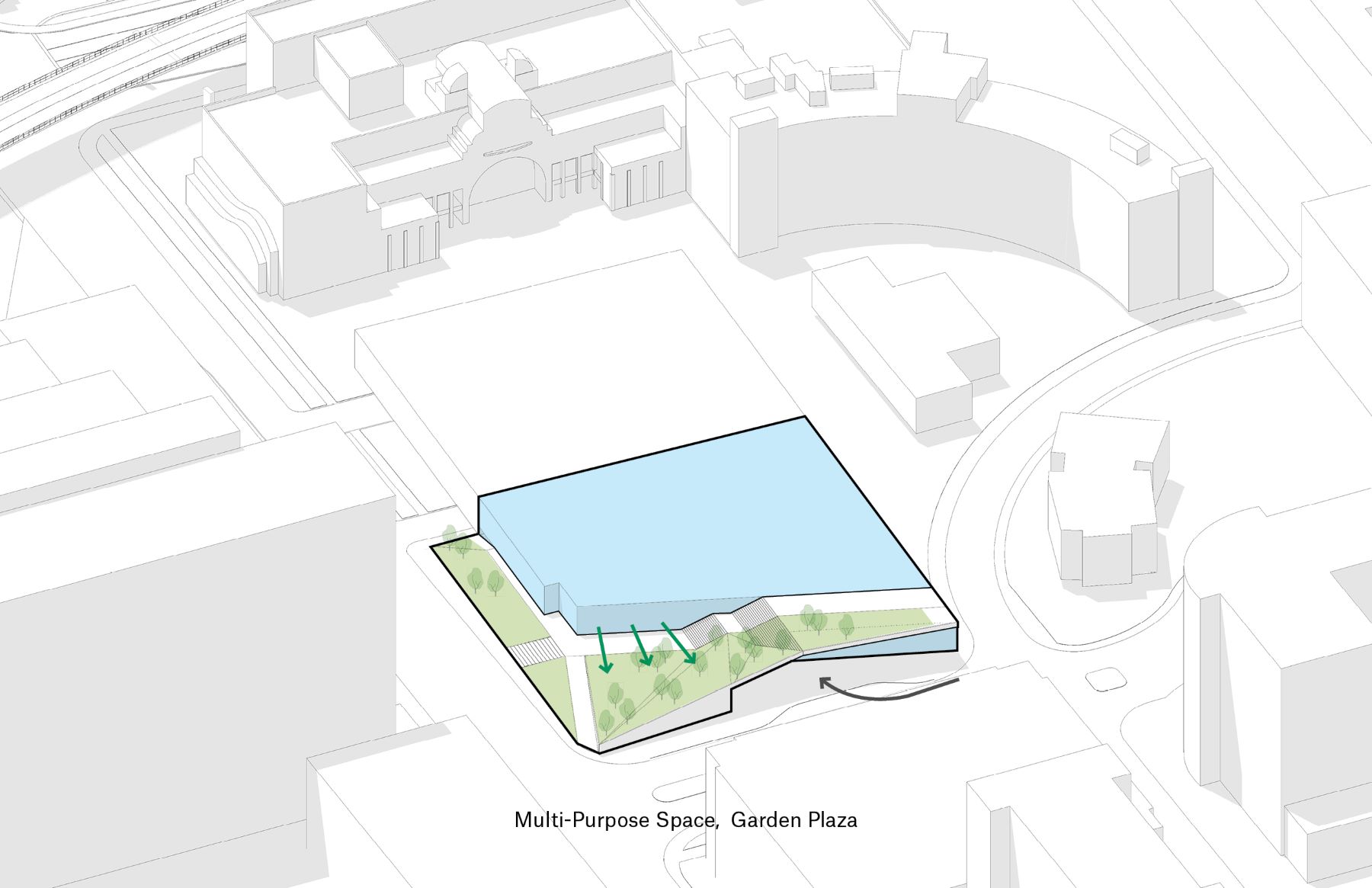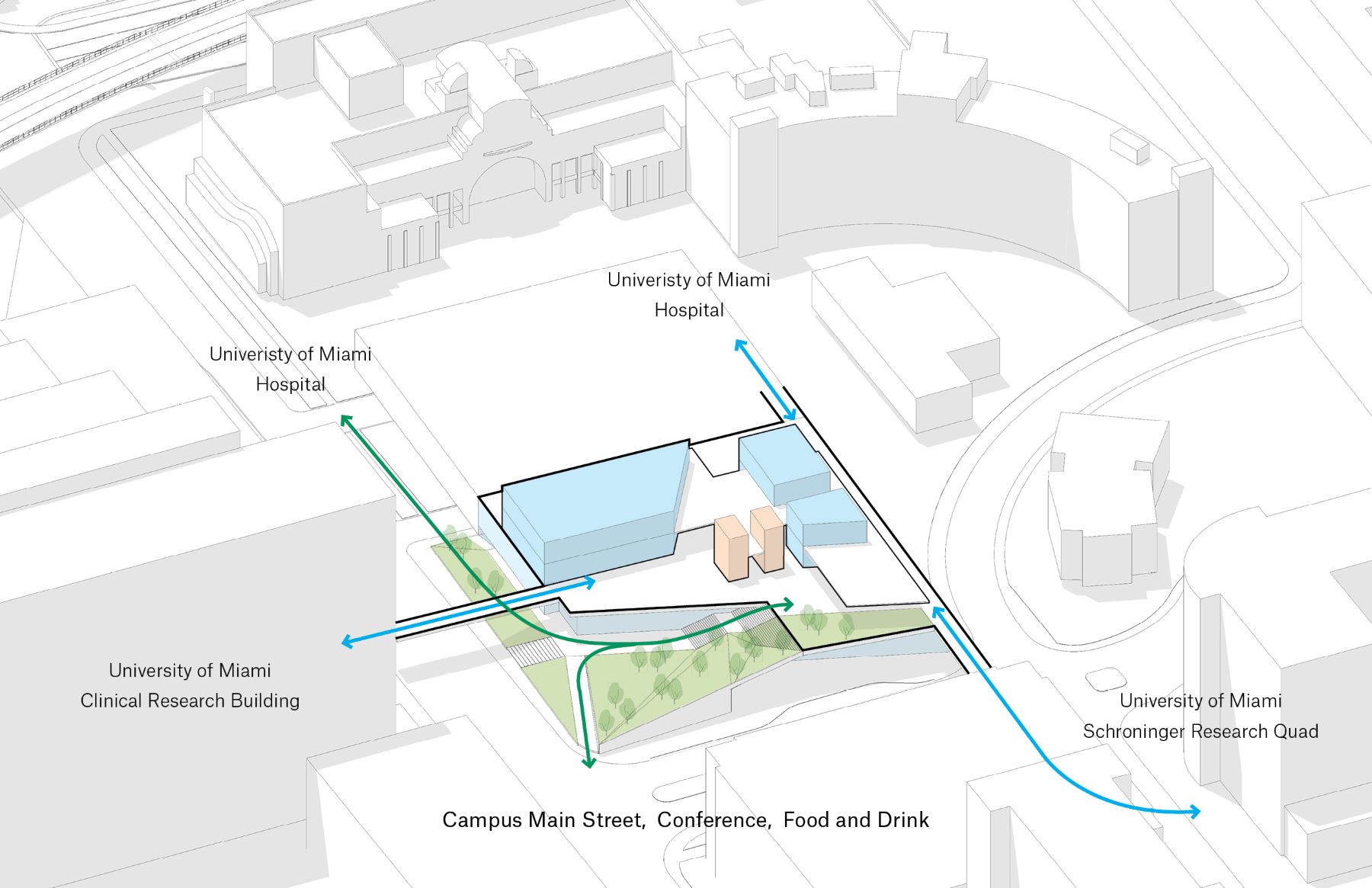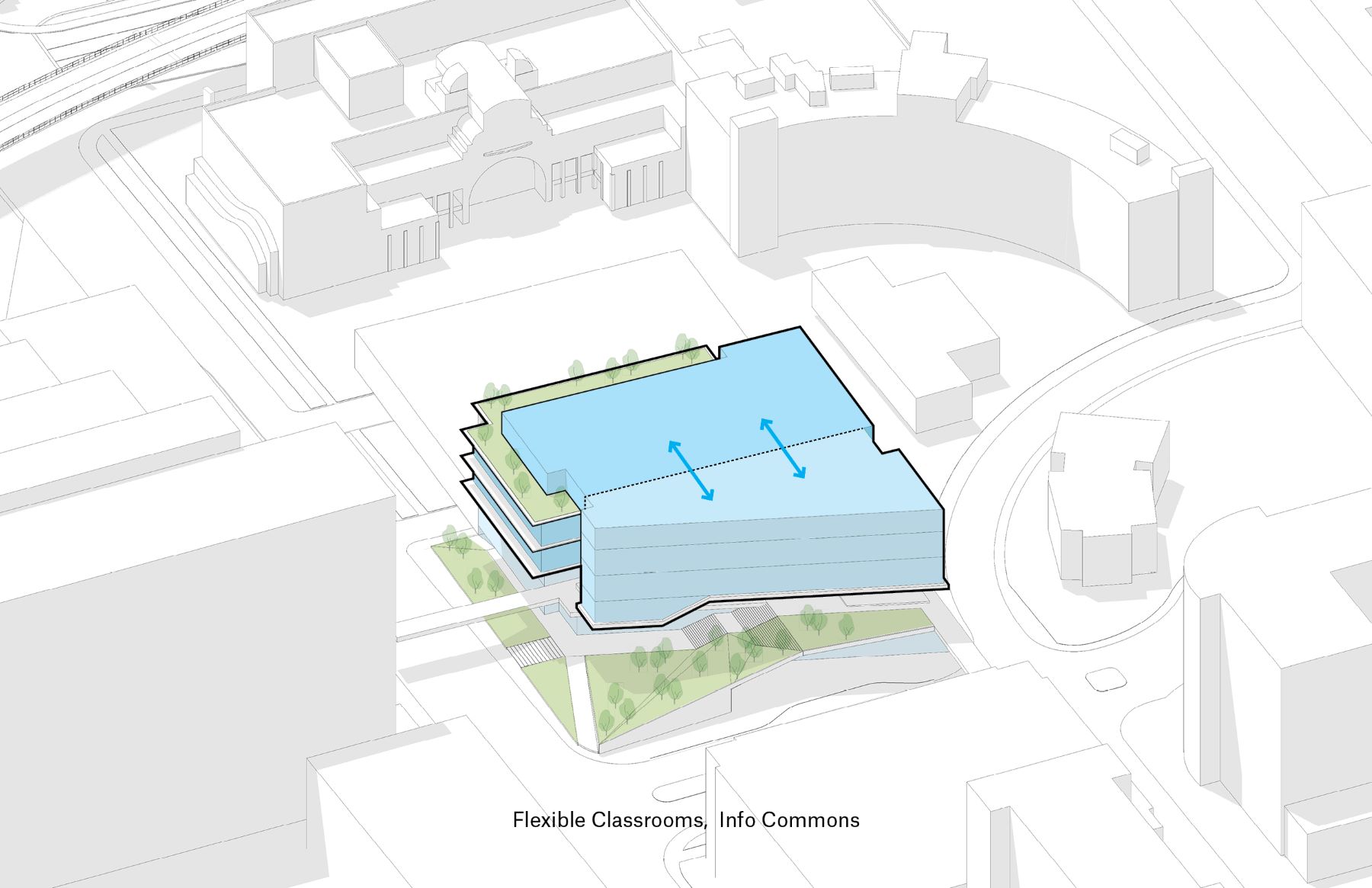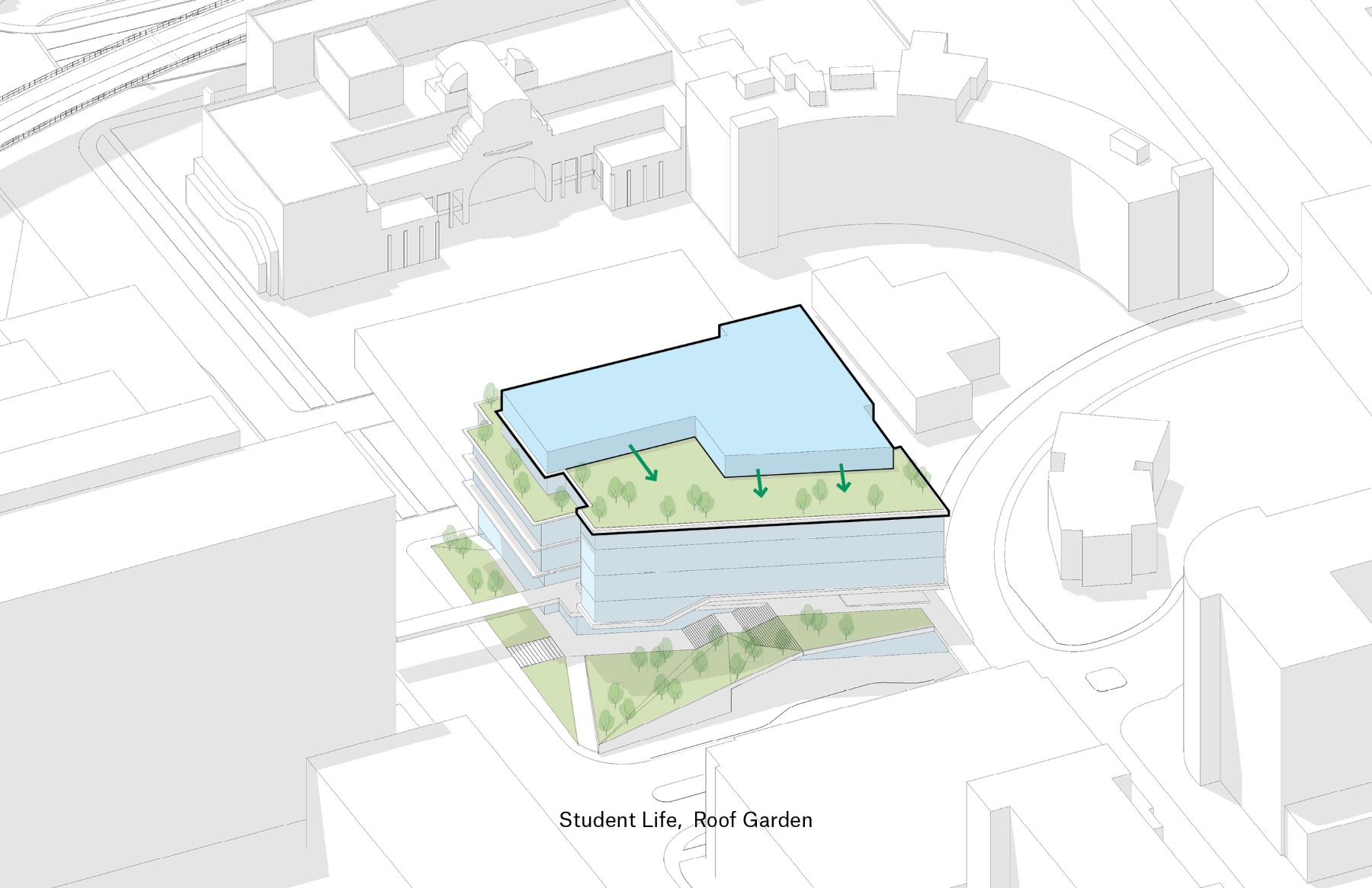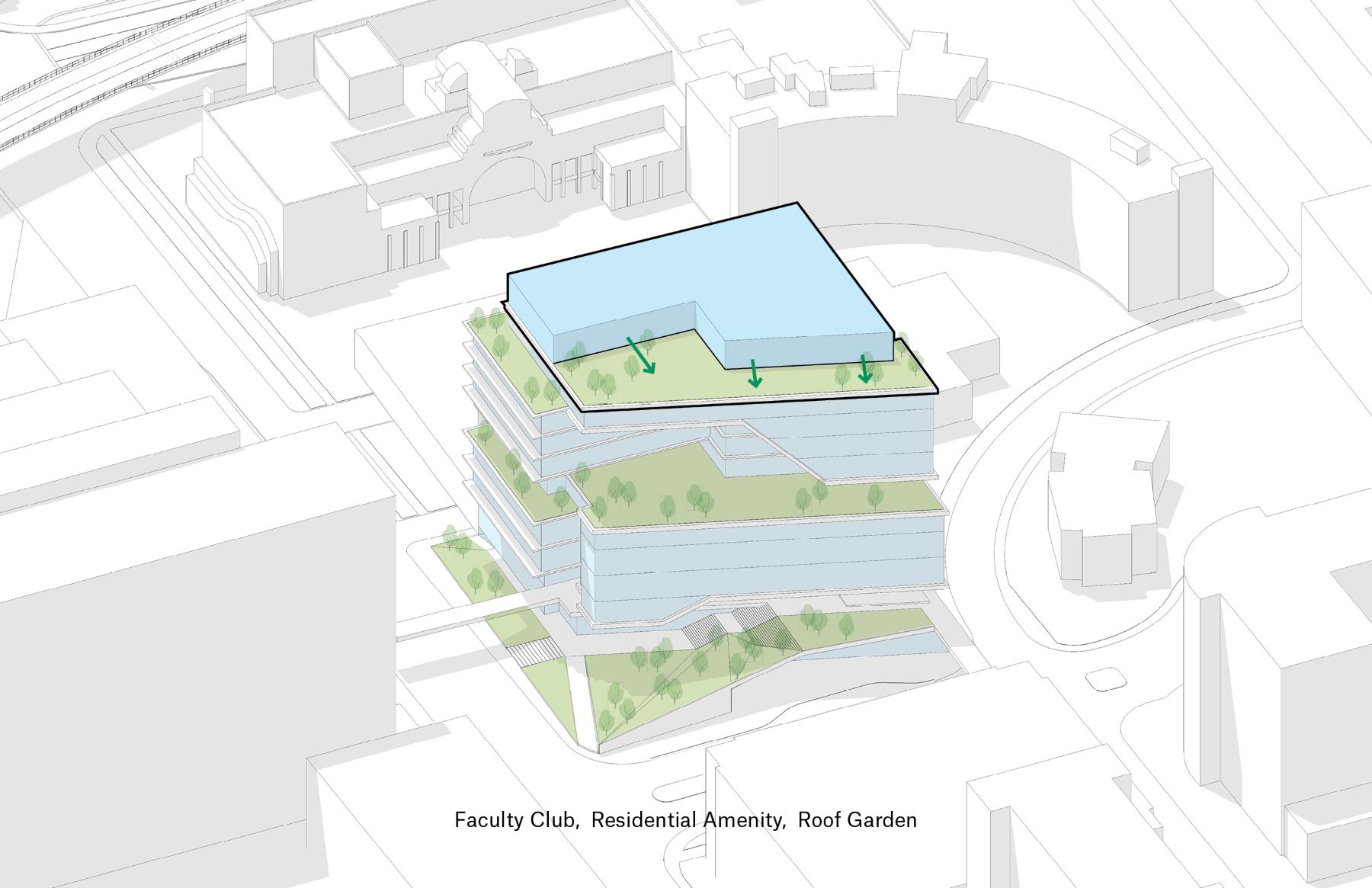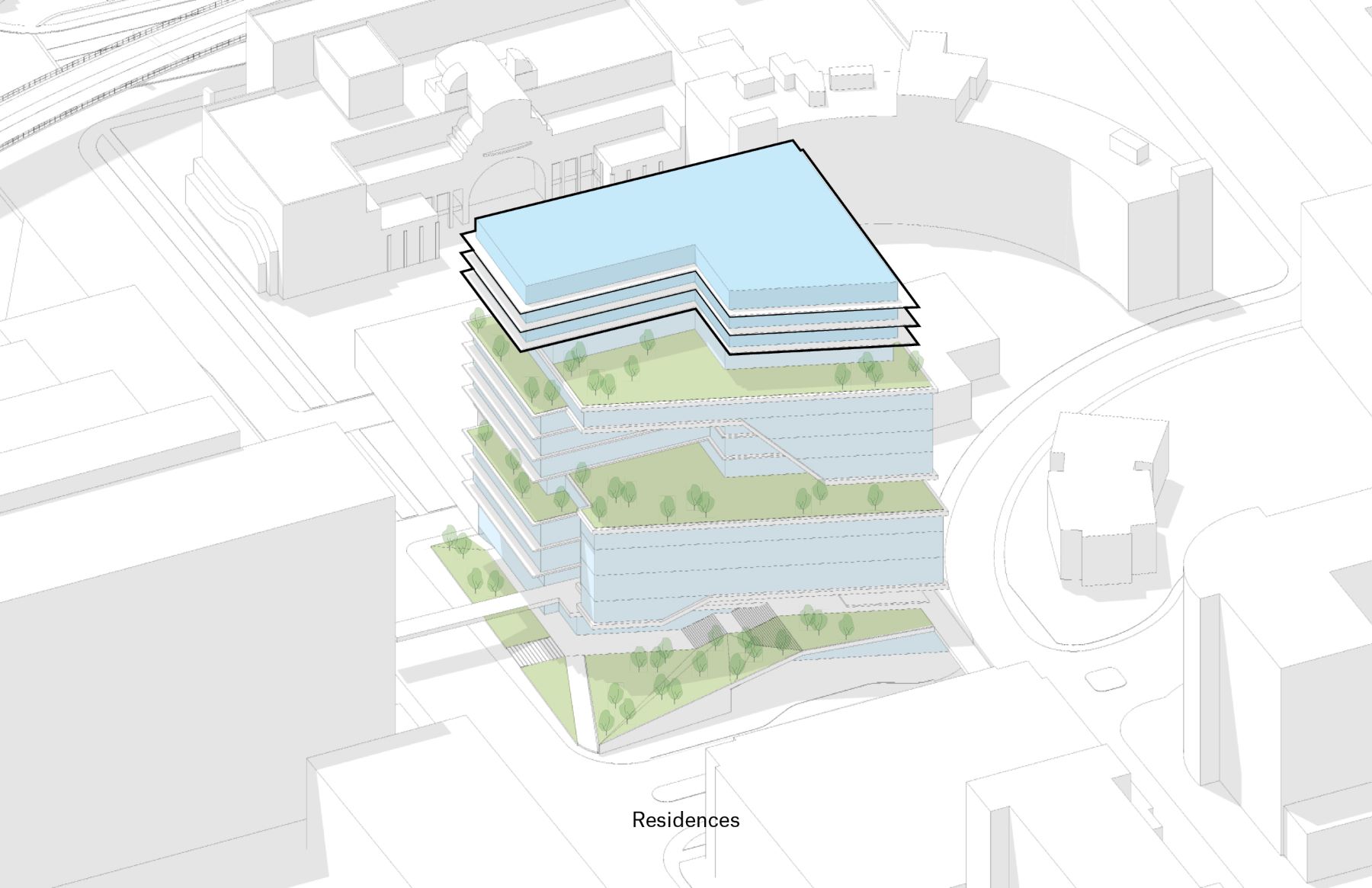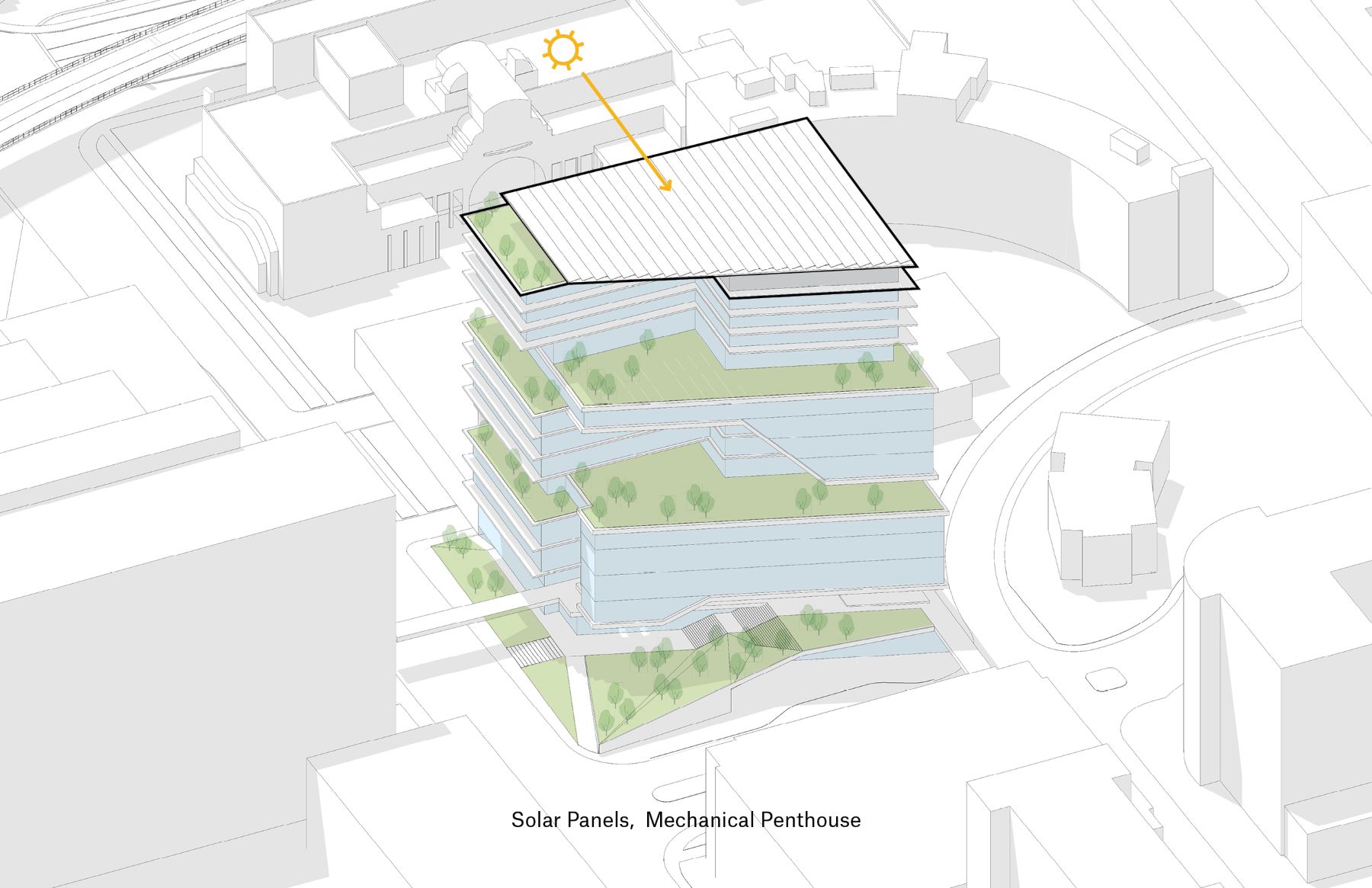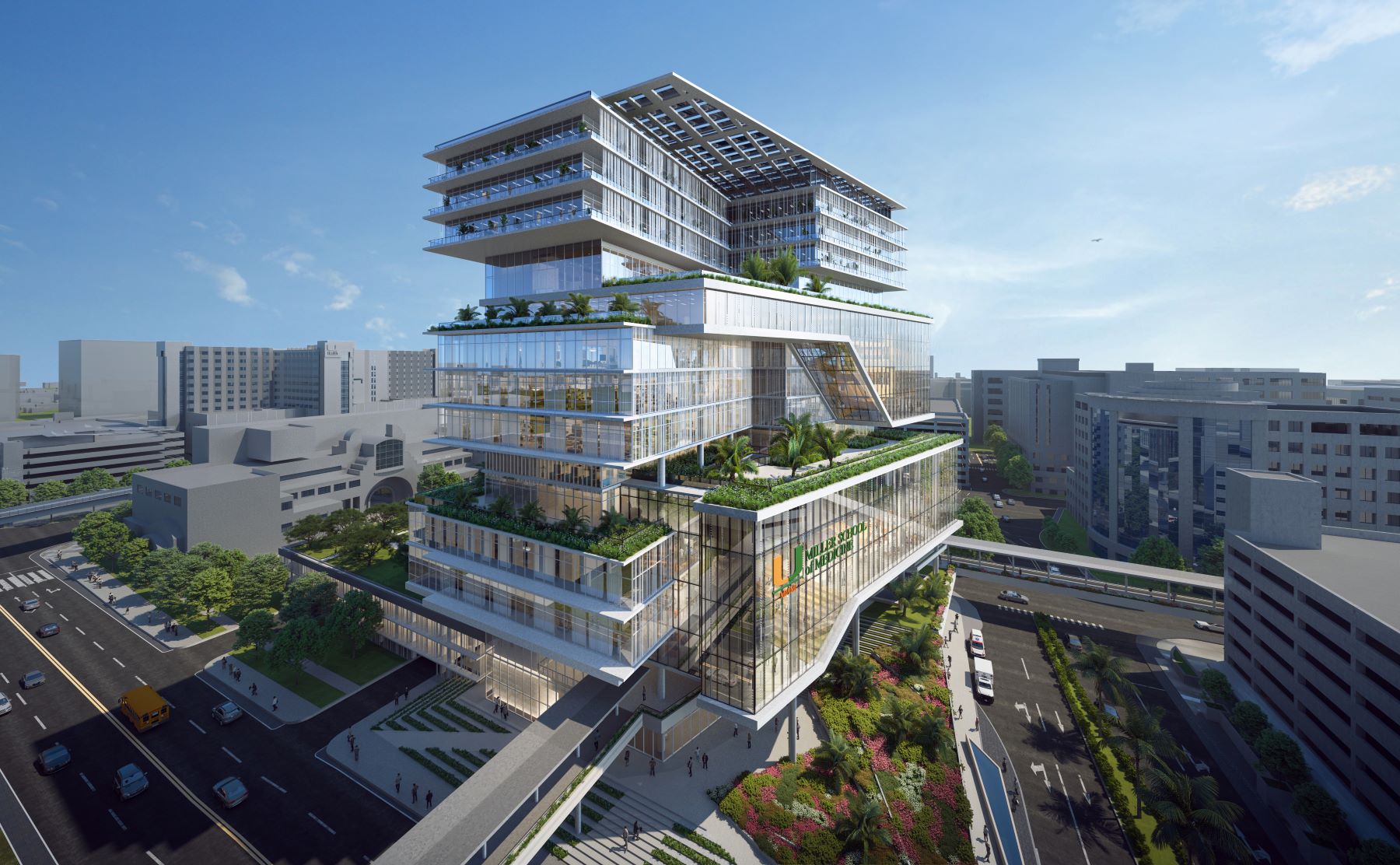
A Thoughtful, Holistic Architectural Response
The design concept is grounded in master planning strategy and design empathy. It addresses not just the immediate need for academic environments, but the broader challenge of transforming a fragmented site into a livable campus. Through a vertically layered approach, the concept organizes educational, research, social, and residential functions into a seamless and engaging architectural experience.
The massing terraces upward, drawing movement and views from the street to the skyline. At ground level, a raised plaza welcomes students and visitors with a lush garden retreat, elevated from traffic and framed by accessible walkways. From there, each floor presents a unique programmatic layer, beginning with food and beverage options that activate the building socially and publicly.
Learning environments occupy the next tiers. Classrooms and modular studios are configured to allow flexibility and future instructional innovation, ensuring longevity even as medical education continues to evolve. A dedicated level for Student Life features a roof garden and lounge, promoting wellness through access to light, air, and informal gathering. Above, clinical simulation centers provide robust training environments, followed by faculty housing and student residences across the uppermost levels, anchoring a full academic life cycle within a single vertical system.
By interlinking uses through shared circulation, transparency, and varied spatial experience, the design encourages human connection at every step. Learning and living are connected visually and physically in ways that promote collaboration, spontaneity, and community.
Elevating the Student Experience Through Design
Central to the design concept is its unwavering focus on student well-being, imagining a fully integrated environment. Academic spaces are intentionally adaptable, allowing groups to scale and shift. Open commons and lounges promote peer-to-peer exchange and social study. Visual connections across levels break down disciplinary barriers and keep the building alive with energy and possibility. Each zone is designed to support how students move and learn.
The southern edge of the building opens onto a landscaped courtyard—a civic-facing green space designed for gathering, events, and engagement with the larger Miami community. This outdoor zone doubles as a place of wellness, drawing people together beyond traditional university boundaries and making the campus more porous, inclusive, and relevant.
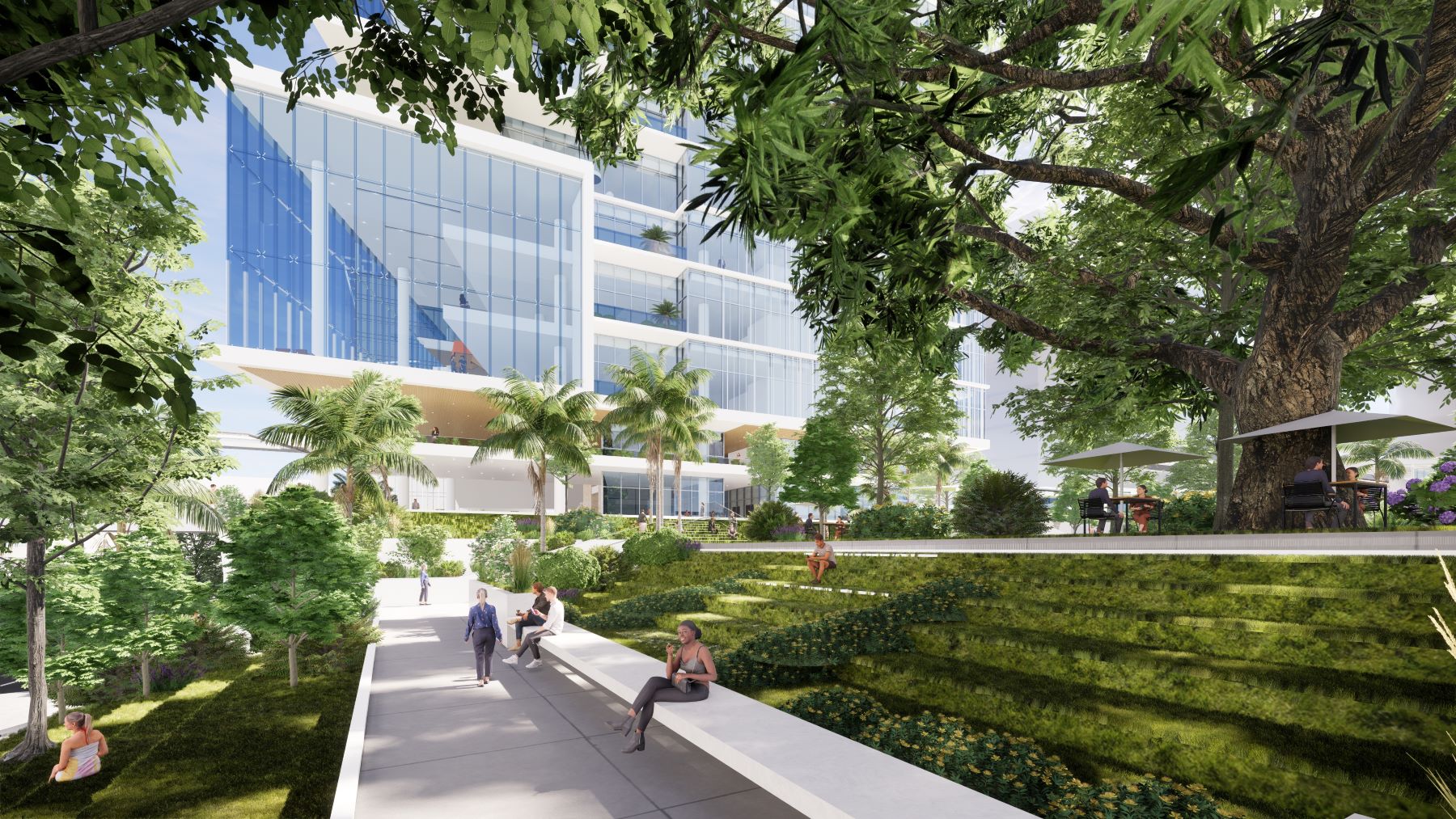
Responsiveness to Climate, Context & Community
The design doesn’t stop at function, it embodies a sense of place. The design team approached the challenge with sensitivity to Miami’s tropical climate, urban density, and cultural tone. The terraced form actively shades each level below, reducing heat gain naturally, while native planting, rooftop solar energy systems, and open-air gardens create a layered system of sustainability.
Simulation rooms account for future technology inserts. Learning studios can convert between lecture, lab, and group work. Instead of rigid programming, the concept promotes long-term operational agility. The building’s materials and structure offer a bold yet contextual aesthetic, reflecting Miami’s architectural identity through a modern, approachable expression of glass, structure, and light. Its transparency supports health and safety while making activity visible. Pedestrians see learning in action, while students see nature as well as each other—inside and out.
Integrated below-grade parking and support functions are masked by a raised ground floor, and the building links to public transit via a skybridge, reducing reliance on cars and further positioning the site as an accessible campus node for years to come.
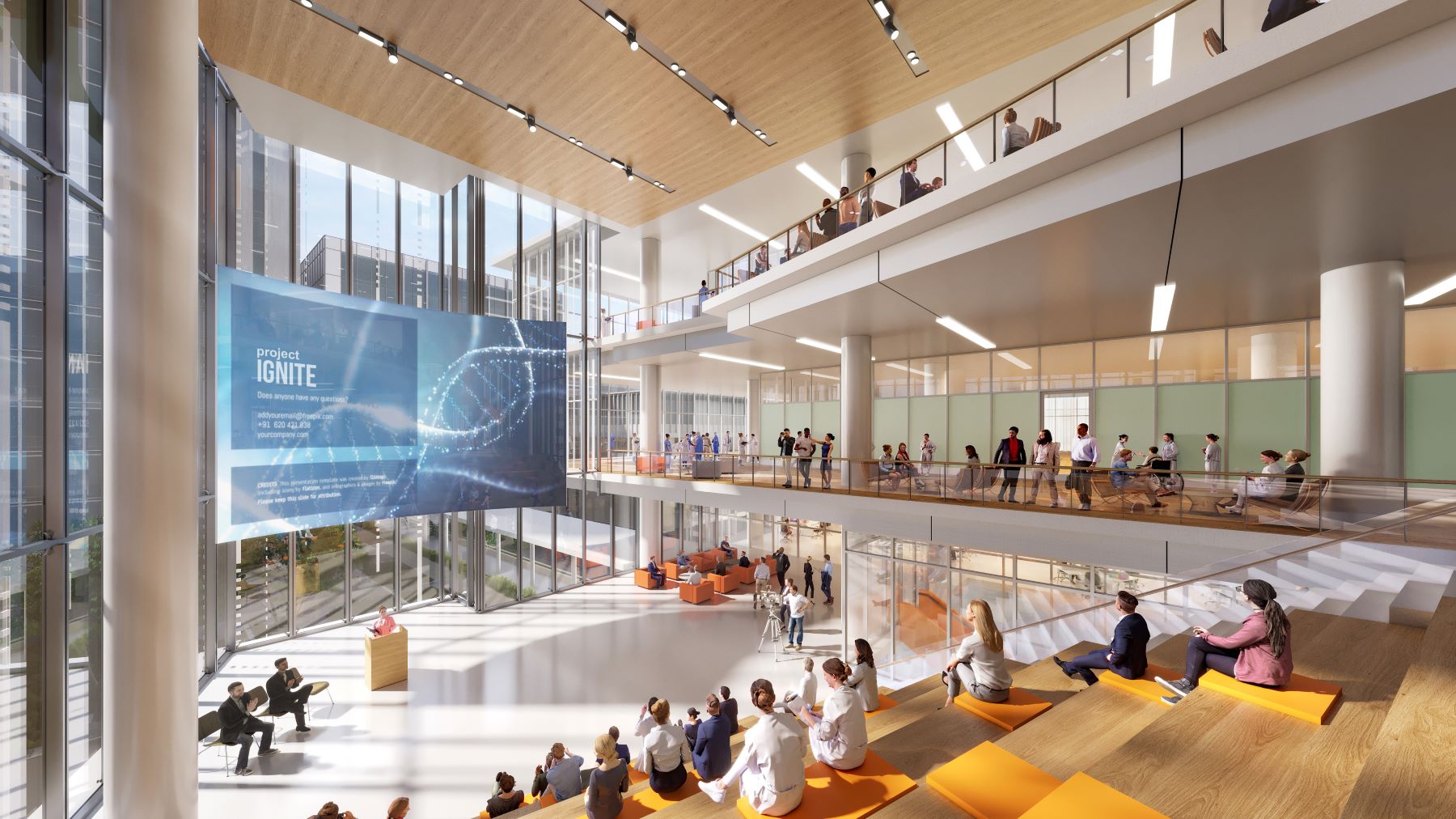
Informed by a Deep Client Relationship
The design concept builds on Gresham Smith’s long-standing partnership with the University of Miami. Previous work on the UHealth Tower—located just steps away—includes major upgrades to surgical space, clinical facilities, and the public entry experience. That experience offered firsthand insight into the university’s operational systems, campus culture, and long-term vision.
Understanding the university’s strategic goals helped shape the proposal in nuanced ways—from how users move through the site, to how each program element aligns with future expansion. Connections to the hospital and surrounding research centers were carefully considered to ensure cohesion—visually, experientially and infrastructurally.

A Lasting Impact Through People and a Sense of Place
Ultimately, Gresham Smith’s design concept proposes more than a modern facility—it offers a meaningful convergence of space, purpose, and interaction. In a dense urban setting that often lacks clarity or community, this design provides both. It’s a structure that fosters academic excellence without sacrificing humanity. A building that meets today’s expectations, while remaining ready for tomorrow’s discoveries.
This concept supports collaboration across departments, levels, and generations, enabling students and educators to innovate together. It cultivates campus pride and academic identity while creating engagement points with the city at large. From public plaza to rooftop garden, every element reflects a clear belief: that meaningful design can elevate lives, shape legacy, and connect people through a sense of place.

